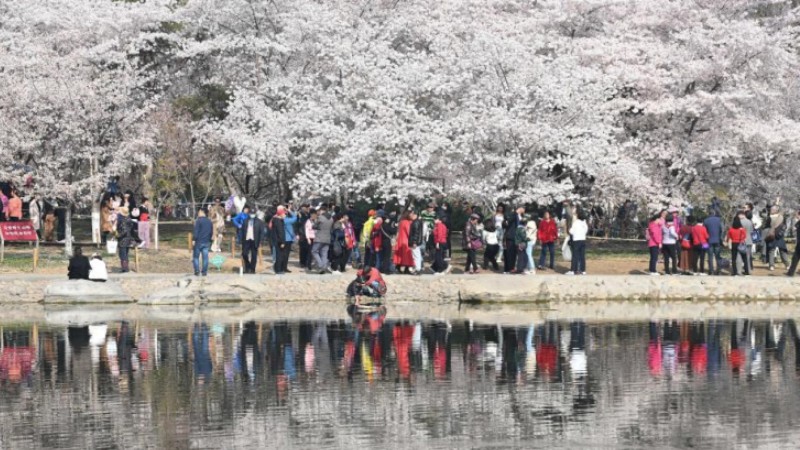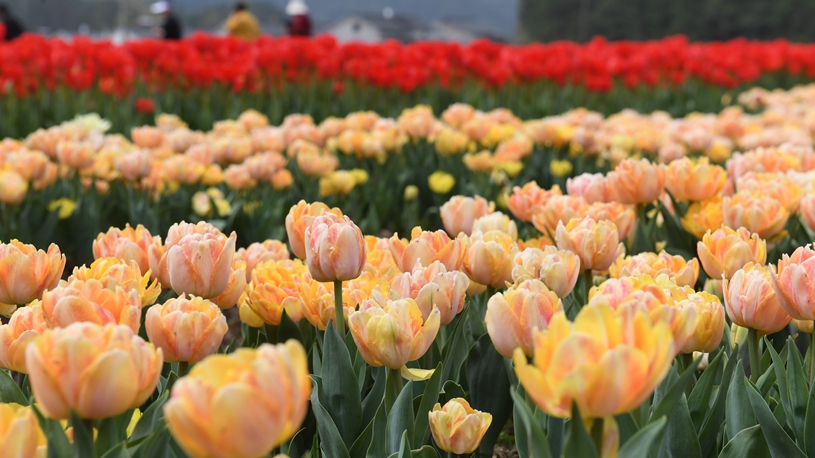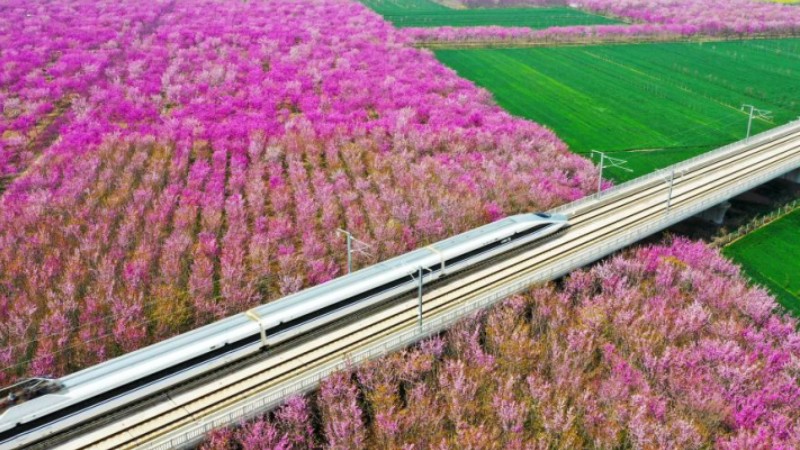What's up with Hong Kong as East-meets-West cultural center?

Audiences visit Art Basel Hong Kong on March 30, 2023. (Xinhua/Li Gang)
Through propelling music, cinema, exhibitions and other artistic activities, Hong Kong bursts its cultural glamor that integrates East and West, old and new, in a bid to become a holistic center of Sino-foreign cultural exchanges.
HONG KONG, March 31 (Xinhua) -- A series of marquee art events, including the Asian Film Awards, the Hong Kong International Film and TV Market, and the Art Basel's 2023 edition of its Hong Kong show were held here in the "Pearl of the East" in March, putting the gateway once again under international limelight.
The bustling scene of art events in Hong Kong highlights its potential as a hub for cultural exchange, in line with the goals outlined in China's 14th Five-Year Plan (2021-2025) to support the development of East-meets-West center for international cultural exchange in Hong Kong.
Since the new-term Hong Kong Special Administrative Region (HKSAR) government took office in July 2022, it has been actively promoting cultural development, focusing on capturing the unique creative atmosphere of Hong Kong's blending of Chinese and foreign cultures.
Xinhua joined the conversation with officials and icons of Hong Kong's vibrant cultural sector to know how they envision Hong Kong's future as a cross-cultural hub. The following are some of their valuable and illuminating insights, together with the latest progress and plans.
SPRING FROM CHINA ROOTS
"Hong Kong is like an eye, through which the East and the West see each other," said Tan Dun, an internationally acclaimed composer and conductor. He is also Hong Kong's ambassador for cultural promotion, nominated in 2022 for a term of five years.
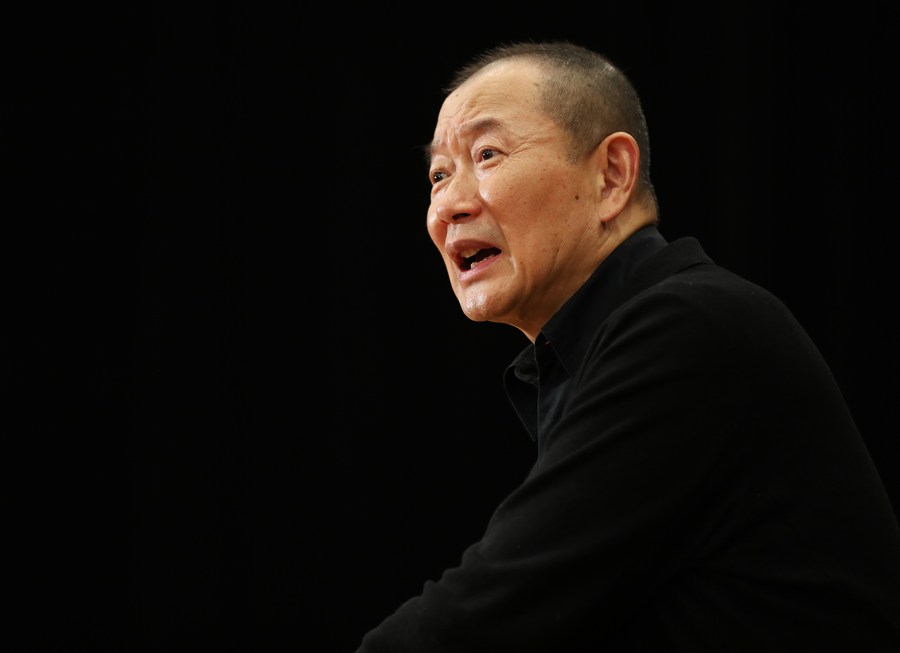
Chinese composer and conductor Tan Dun during the interview on March 30, 2023. (Xinhua/Li Gang)
Tan believes that to tell the stories of China including Hong Kong's stories well to the world, young people must first thoroughly study and understand Chinese culture.
This year, he plans to lead Hong Kong performing artists to mainland regions including Guizhou and Shaanxi, where the renowned Terracotta Warriors were discovered, to engage in "dialogue" with traditional Chinese culture.
He will also visit the Nvshu Village known for the centuries-old "women's script", a secret female-only language, in central China's Hunan Province during the Mid-Autumn Festival to experience China's unique intangible cultural heritage.
"The cultural advantage of Hong Kong is obvious -- it brings together both Eastern and Western cultures," said Kevin Yeung, secretary for culture, sports and tourism of the HKSAR government.
Compared to cities like London and Paris, Hong Kong may not be considered a city with a deep cultural heritage, according to Betty Fung, chief executive officer of West Kowloon Cultural District Authority. She believes that those places can be called "cultural centers," while Hong Kong's positioning is very clear -- it is a center for cultural and artistic exchanges between China and foreign countries.

Chief executive officer of West Kowloon Cultural District Authority Betty Fung (R) and director of Hong Kong Palace Museum Louis Ng (L) during the interview on March 17, 2023. (Xinhua/Lv Xiaowei)
She said Hong Kong's biggest advantage lies in its roots in Chinese culture and the rich cultural resources of the mainland.
In the next few months, Fung will be visiting different countries such as South Korea and Singapore to promote Chinese culture to the world and tell the story of China, fully showcasing the unique charm of the blend of Chinese and foreign cultures in the West Kowloon Cultural District.
EXCELLENT "HOME"
The Art Basel show in Hong Kong is considered a barometer of the global art market. According to the organizers, this year's exhibition brought together 177 galleries from 32 countries and regions, attracting 86,000 visitors during the five-day event.
Hong Kong has once again proven its indisputable position as the leading art market center in Asia and its key position in global trade, said the organizers, describing Hong Kong as an excellent "home" and base full of possibilities.
In early April, major auction houses will hold their spring auctions, and the first Hong Kong Pop Culture Festival will kick off in April. Many art and cultural events will further showcase Hong Kong's unique charm as the center of Asian culture, and the thriving artistic ecosystem is also expected to continue to flourish.
The West Kowloon Cultural District, located on the edge of Victoria Harbour, covers an area of about 40 hectares and is one of the largest cultural projects in the world. In recent years, several world-class art and cultural facilities have opened in the district, including the Xiqu Center, the M+ Museum of visual culture, and the Hong Kong Palace Museum (HKPM), which have greatly strengthened Hong Kong's cultural and artistic image.
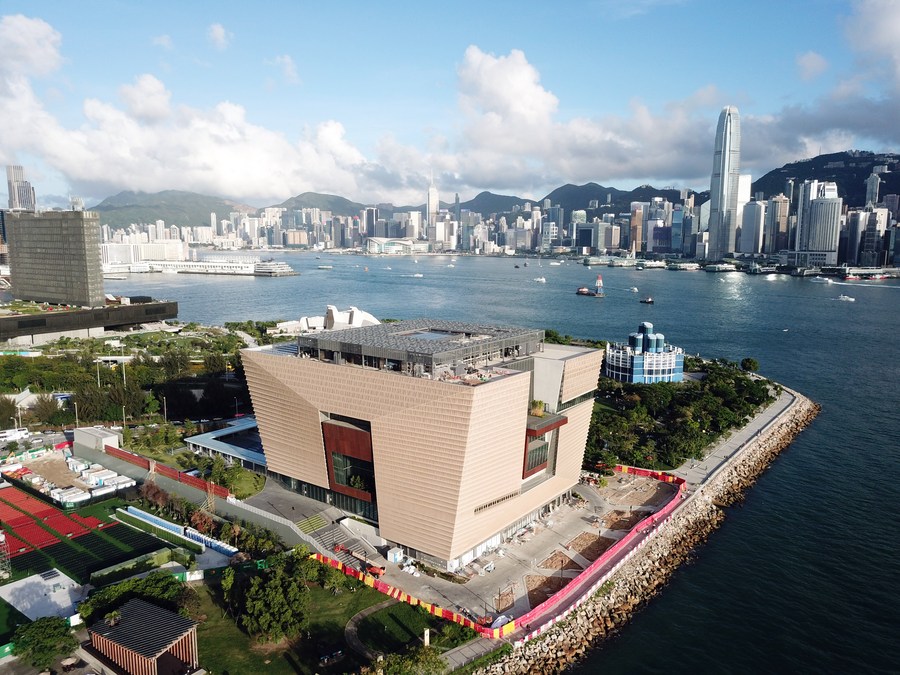
The photo taken on May 29, 2022 shows the Hong Kong Palace Museum located in Hong Kong's West Kowloon Cultural District. (Xinhua/Li Gang)
Since opening to the public in July last year, the HKPM has attracted more than 900,000 visitors. It has become a new space for Hong Kong citizens and global visitors to learn about the development of Chinese civilization and culture, and has also provided a broad platform for dialogue and exchange between Eastern and Western civilizations.
"Our visitors include many foreign tourists, who give high praise to our exhibits and architectural design," said Louis Ng, director of the HKPM. Many of them visit multiple times, which makes him feel the public's love for traditional Chinese culture.
MAGNET FOR TALENT
Tan Dun said he believes it is not difficult to attract different talents to come to Hong Kong, noting it is hard to find a place as attractive as Hong Kong in the world.
"I love the education here -- the integration of the East and West, as well as art and science," he said. "These characteristics help to attract more talent to Hong Kong and produce more creativity."
In terms of cultivating local young artistic talents in Hong Kong, Tan said that he especially wants to invite young musicians and artists from Hong Kong to participate in the Edinburgh International Festival and the Holland Festival, and cooperate with symphony orchestras such as the Royal Concertgebouw Orchestra, so that Hong Kong's young artists can have a dialogue with the world audience on the international stage to talk about Hong Kong and sing praises for Hong Kong.
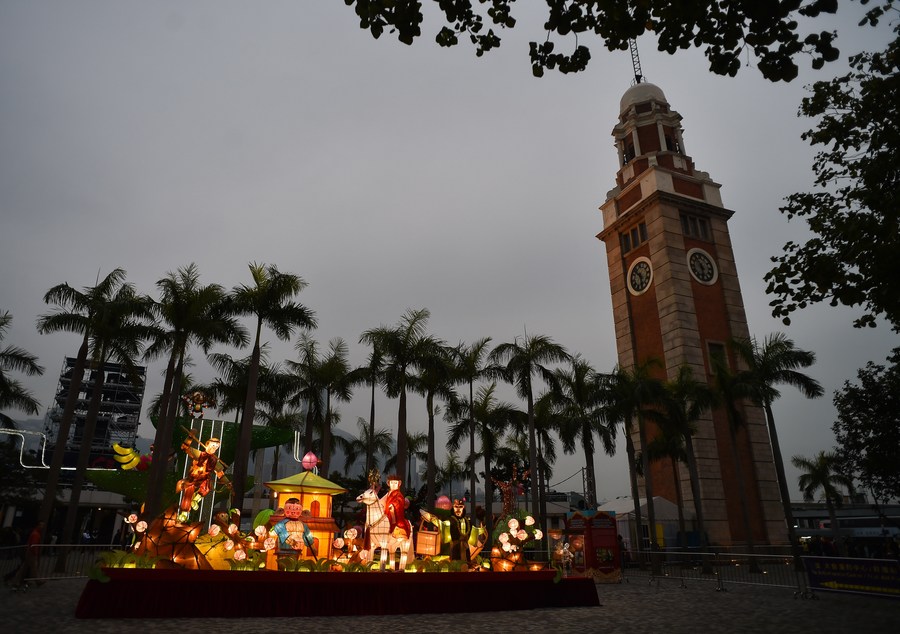
Colorful lanterns are lit up at Hong Kong Cultural Center Piazza to greet the upcoming Chinese Lantern Festival, south China, Feb. 17, 2016. (Xinhua/Ng Wing Kin)
Establishing a diverse and prosperous cultural and creative ecology in Hong Kong requires continued cultivation and aggregation of more talents here.
To this end, the HKSAR government has asked the Hong Kong Academy for Performing Arts to look into ways to nurture arts and cultural talents for Hong Kong and the Guangdong-Hong Kong-Macao Greater Bay Area, and to establish a new campus in the city's Northern Metropolis and raise the proportion of non-local students.
"Local cultural and artistic workers will encounter different difficulties in their work or creation. That is why we need to do more promotion and assistance in policy, especially when they have no chance to show their talents," said Kevin Yeung.
"Give them more opportunities, so that they can play their strengths and find their position in the development of Hong Kong's cultural and artistic industry as a whole."
Photos
Related Stories
- Hong Kong welcomes issuance, listing of catastrophe bond by World Bank
- Hong Kong unveils measures to boost family office businesses
- Hong Kong's "new industrialization" drive sees more support
- China's central bank to issue 5 bln yuan of bills in Hong Kong
- Hong Kong to more actively integrate into overall national development: HKSAR chief executive
Copyright © 2023 People's Daily Online. All Rights Reserved.







